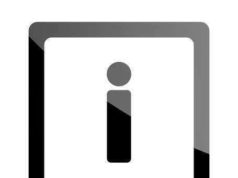
Negotiable Instruments
Negotiable instruments do not have to come in the simplified forms with which most people are familiar. Checks, for instance, are negotiable instruments that essentially have a common set of terms and understanding applied to each and every one, but in theory those terms could be written out as an actual contract.
Clearly, then, there is a form for such contracts to follow in their writing that would define them as negotiable instruments, and most negotiable instruments effectively imply those fully written contracts by satisfying the requirements for being negotiable instruments under Article 3 of the Uniform Commercial Code.
The requirements are varied, but designed to be specific and rigid, such that negotiable instruments are clearly defined and understood without any confusion. For example, negotiable instruments must, of necessity, be unconditional orders for payment.
A negotiable instrument cannot hinge payment directly upon some other condition or contract, such as in a deal where payment would only be made if the goods being purchased were found to be satisfactory and non-defective. Such a contract would not be a negotiable instrument.
Negotiable instruments can involve the delay of payment until conditions are met, but payment will be made on a negotiable instrument unless the instrument is annulled in other clearly described ways. Negotiable instruments also must be made in written form and cannot be oral contracts. They must also have clearly defined elements of when the payment must be made available. Follow the link for more information on the basic requirements of the implicit negotiable instrument form.
Signature Requirements
In order to function, negotiable instruments must have the appropriate signatures attached. The necessary signatures will vary depending upon whether or not the negotiable instrument is an order or a promise and who the parties involved may be. A check, for instance, as a draft in which the drawee is inherently determined to be a bank will require a different set of signatures than will a promissory note like a loan.
The primary uniform requirement of all negotiable instruments is that they be signed by the issuer. For example, a check must be signed by the person writing the check, the drawer. A promissory note must be signed by the person accepting the debt and promising to pay back the other party. Without such a signature, no negotiable instrument would be viable or enforceable. These signatures also do not necessarily have to be signatures of the most generally understood sort, but instead need only be some sort of stand-in official identifier of endorsement from the issuer.
Many negotiable instruments require additional signatures, however. Any check or draft which is made as a pay to order negotiable instrument will inherently require an endorsement signature from the payee in order to be made functional, for example. Click the link for more information on the signature requirements of negotiable instruments.
Promise or Order
Any given negotiable instrument will be, of necessity, either a promise to pay or an order to pay. A promise to pay involves two parties, generally, with one party promising to pay the other a specified sum of money at a specified time. An order to pay, on the other hand, involves three parties with the issuer of the order, the drawer, ordering a second party, the drawee, to pay a third party, the payee.
The primary difference between the two is that an order to pay involves not debt, but payment out of the resources of an intermediary party. A promise to pay, on the other hand, is indicative of debt, and not direct, immediate payment. Orders to pay are generally called drafts, and promises to pay are called promissory notes.
Promissory notes are often used for loans and can include terms concerning interest payments on the initial sum of money. The notes’ issuers would be making a promise to pay back the loan on a specific date along with a specific amount of interest accrued over that time period.
Drafts, or orders to pay, are most commonly known in the form of checks, which are drafts in which the drawee is defined as a bank. Drafts are often used in business dealings, however, as payments for an exchange of goods.
This is because specialized terms can be added to drafts in order to make them more useful for such deals, such as specific terms on payment only being made available a certain amount of time after the transfer of goods. For more information on the differences between promises and orders and the importance of both, follow the link.
Established Amount Of Money
All negotiable instruments must be made for a determined amount of money. Any contract of exchange which uses an indeterminate or variable sum of money would not be a negotiable instrument, inherently.
This isn’t to say that negotiable instruments cannot have some form of variation, as would be provided through the practice of interest on a promissory note, because such variation is actually determined through a pre-set formula and is based on the original static amount of money. The primary reason for negotiable instruments to involve such a pre-set established amount of money is to ensure that they are well-defined and clear.
Negotiable instruments are not open to interpretation, as the terms and characteristics of any given negotiable instrument are likely to be determined simply by its nature as a certain type of negotiable instrument. As such, if the negotiable instrument could be made for a variable amount of money, it would detract strongly from the overall definition of the negotiable instrument. To find out more about the use of established amounts of money within negotiable instruments, follow the link.
Time Requirements
One of the defined qualities of negotiable instruments is that they must involve a specific date or time when the negotiable instrument will be made payable. This is in some ways misleading, as the specific date or time when the negotiable instrument must be made payable can be dependent upon other factors.
For example, the specific date or time might simply come after a defined interval from the date upon which the instrument is originally “sighted” or accepted by a bank. It might also come some time period after the goods exchanged within the transaction have arrived at the buyer’s location so as to help secure the overall transaction by preventing the seller from taking the money without sending the goods.
The time requirements of negotiable instruments are primarily focused on preventing the same kind of indeterminacy that might arise from not having an established amount of money. Without a clearly defined date for the transfer of money, it is possible that those who make promissory notes would be able to avoid ever having to pay off their debts.
The time requirements of negotiable instruments are designed to prevent such shirking of debts. For more information on the time requirements inherent to negotiable instruments, click the link.
Pay to Order or Bearer
Every negotiable instrument must be designed to either pay to order or to bearer, without exception. The difference between the two is relatively simple, as an instrument made to pay to bearer is payable to whomsoever holds the physical documentation of the instrument, while an instrument made to pay to order is payable only to the person or party identified in the negotiable instrument.
If the person or party identified on the negotiable instrument is nonexistent, then that instrument would not actually be negotiable. But if, instead, there is no party or person identified on the negotiable instrument, then it is assumed to be payable to bearer. If the instrument is made payable to cash, then it is similarly payable to the bearer.
Any negotiable instrument that is payable to the bearer is more dangerous for the payee than one that is pay to order. This is because a payable to bearer instrument is, essentially, money in and of itself; the document is all that is necessary to receive payment.
Thus, if the document is stolen, then the thief would be able to use it to receive payment without the drawee having any notion that the document was stolen. If the thief were later caught, then one could likely receive some form of restitution from the thief, but the drawee him or herself would not be held liable in such a case.
Pay to order instruments, on the other hand, can only be used for payment when they have the specific endorsement of the party mentioned on the instrument. As such, they are generally safer than pay to bearer instruments. Follow the link for more information on the differences between pay to order instruments and pay to bearer instruments.
Bearer Instruments
Bearer instruments are those negotiable instruments that are payable to the bearer and not to order. There are many ways to establish a bearer instrument, including failing to define the person or party to whom the instrument is payable and making the instrument out to cash.
Bearer instruments have their uses, mostly because they are easy to use and transfer; simply handing over the document of a bearer instrument is enough to transfer the funds involved. This is fortunate for ease of use and also for those situations in which the party to pay is unclear. For instance, a prize check might be made out to cash so that it can be bestowed upon any bearer instead of a specific one.
But bearer instruments then have the inherent flaw of being easily stolen, as any party holding the bearer instrument can use it to receive funds without the drawee being able to tell if the instrument is stolen or not. Whether or not this flaw outweighs the benefits is a decision to be made by any given issuer of a negotiable instrument.
Even pay to order negotiable instruments are not entirely safe from the flaws of bearer instruments, as a pay to order negotiable instrument with an endorsement can be stolen in the same fashion as a bearer instrument. To find out more about the advantages and flaws of bearer instruments, click the link.


























